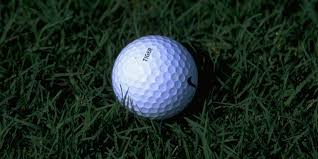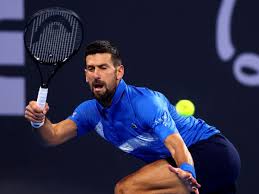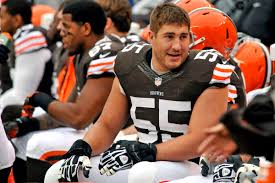
Every product was carefully curated by an Esquire editor. We may earn a commission from these links. Here’s how we test products and why you should trust us.
One morning, Tiger Woods was chipping balls around with Mark O’Meara. He watched O’Meara’s chips nip the green and check up closer to the hole than his. After a while he asked, “How do you get the ball to do that?”
His buddy “Marko” was one of a few friends who could needle him. “Don’t worry, T,” he said. “You’ll learn. It takes skill and maturity.”
They kept it up with the same results until Tiger tried a few chips with the ball O’Meara was playing, a Top Flite Strata Tour with a solid core and a new-age polyurethane cover. In no time he was spinning and stopping chips as if they were on a string. “It wasn’t you. It’s the ball!”
O’Meara nodded. “You’re catching on,” he said. “Let me explain something to you. You are playing an archaic golf ball.” He wasn’t pushing Top Flite in particular. In fact, a less prominent brand had hired some of the best golf ball designers in the industry. “Bridgestone could build a ball specifically for you, a ball that goes farther. It’ll pierce the wind better. It’ll be softer around the greens.”
Tiger was intrigued. He had always brought an engineering approach to his profession, his equipment, even his swing. One thing he liked about living at Isleworth, seventy miles due west of Cape Canaveral, was watching space shuttles take off from the cape. He admired the NASA scientists who orchestrated the latest electronics, hardware, and the human element to send astronauts to space. In order to overcome gravity, a space shuttle—a 4.4-million-pound hulk with more than two million working parts—had to ride an enormous fuel tank full of liquid oxygen and hydrogen and a pair of booster rockets the size of grain silos. It had to be well armored to withstand the fires of reentry but nimble enough to glide to a landing like a passenger plane. As one of the astronauts he admired put it, designing such a flying machine was “like bolting a butterfly to a bullet.” Compared to that, building a better golf ball ought to be easy.
It wasn’t. But O’Meara convinced him that it was possible. After his fifth-place finish at the Masters, Tiger devoted a quiet “month off” to some of the most intense practice sessions of his life, testing a ball that was anything but archaic.
Tiger spent months testing a different design, a prototype similar to O’Meara’s Top Flite Strata. Made in Japan by Bridgestone, funded by Nike, the new ball had a solid core, a mantle made of polybutadiene, the synthetic rubber that made Super Balls bounce so high, and a cover of urethane, a polymer used to make floor wax, bowling balls, and traffic cones. As one golf ball designer put it, a ball’s cover “is its steering wheel, but the core is its engine.” Compared to a liquid core wrapped in rubber bands, the prototype’s core and mantle transferred more energy from the club to the ball, which spun less and flew farther. Its urethane coating had next to no effect on shots struck at driver speeds but felt soft and added grab on short-iron and wedge shots.
Tiger had planned to spend several more months if not the rest of the year experimenting with various versions of the new design, like a Formula 1 driver testing a new engine. He wasn’t the type to introduce a variable that was still in beta, but he loved the way the Bridgestone prototype came off his driver. And there was a business reason to expedite his switch to a new ball.
Titleist was paying him $4 million a year to play its ball. But he was also a “head to toe” Nike endorser, paid to wear the company’s clothing. The year before, he’d been filming a Nike commercial, killing time on the range between setups, when ad executive Chuck McBride saw him juggling a ball with his wedge. Tiger had been amusing himself and his friends with driving-range tricks for years. He could keep the ball going hacky-sack style for minutes at a time, switching the club from his right hand to his left, between his legs, and behind his back. Sometimes he would finish by flipping the ball belt high, turning sideways, and using a baseball swing to slam it out of sight.
With McBride egging him on, he tried it on camera. But not even Tiger could pull it off every time. He’d keep the ball in the air for fifteen or twenty seconds, only to drop it when he switched hands or whiff on the baseball swing. They were running out of daylight when a crew member who happened to be a gambling man pulled a $100 bill from his wallet. “Bet you can’t do it on the next try,” he said, placing the money on top of the camera.
“So Tiger starts juggling again,” McBride recalled. Bounce bounce bounce went the ball as he shifted the club between his left and right hands, between his legs, behind his back, until they reached the half-minute mark and McBride cued him for the baseball-swing finale. “I give him the cue, and he just smacked it.” Tiger swung his wedge and fungoed the ball out of sight. “Everyone stood there like ‘Shit, he did it!’ Tiger reaches down, grabs the hundred-dollar bill and walks off.” The commercial made news. Many viewers were sure there had to be special effects involved. When Sports Illustrated editors screened the ad at the magazine’s headquarters in New York, one said, “Nobody can do that—not even him.”
It seemed that the only people who didn’t like the “Hacky Sack” commercial worked for Titleist. The number one ball maker was paying Woods millions of dollars to play its liquid core ball, the 90-compression Titleist Professional he was bouncing in the ads. But with no close-ups on the ball and Nike’s swoosh filling the screen at the end, viewers might well have thought he was juggling the sponsor’s ball. Within a month, Titleist sued Nike for false advertising. That gave Phil Knight, Nike’s combative CEO, a chance to pry the game’s top endorser away from its top golf ball maker. He promptly offered to double Woods’s endorsement deal to more than $17 million a year, plus a cut of the company’s profits,
Tiger listened. Titleist’s policy was to spread its endorsement money around, enriching him and many more of the world’s leading players, but Woods already was Nike Golf. His role as the company’s “next Michael Jordan” had only grown since 1996, when Knight and Nike had signed him to a five-year, $40 million deal the day he turned pro, introducing him with a now-famous ad in which he spoke of the prejudice he faced as a minority golfer and saying, “Hello, world.” With that, he became the face of golf and Nike’s successor to Jordan. The company was planning a new Tiger Woods Building on its Beaverton, Oregon, campus, one that would be nearly twice the size of its Michael Jordan Building.
For Tiger, switching to a Nike ball might kill three birds with one Space Age prototype. It could teach Titleist and other sponsors not to take Tiger Woods for granted. It could reward Nike for its loyalty to him. And it could give him an edge on every Tour golfer who was still playing an archaic ball full of rubber bands. But only if the prototype performed better than the Titleist Professional he’d been playing.
That spring, after his fifth-place finish at the Masters, he picked up the pace of his work with Nike’s prototype.
Kel Devlin, the son of the Australian tour pro Bruce Devlin, was Nike’s point man on the project. A scratch golfer who traveled with an early model of a launch monitor, Devlin was awed by Woods’s feel for the technical aspects of his game. Tiger would say, “I’m going to hit a cut here, so my spin rate will be four hundred RPMs more than if I hit a draw.” When Devlin checked the monitor, the number was never more than a few RPMs off. Or Tiger would say, “My swing speed was one twenty-eight. I’m going to crank it up, give it five more miles an hour.” Devlin checked, and there it was: 133. Sometimes Devlin’s team would test him by slipping a different ball into the mix. Tiger wasn’t fooled. “What kind of ball was that? It felt harder.” In mid-May, he flew to Texas for the Byron Nelson Classic. Still hitting his 90-compression Titleist Professional, he missed a playoff by a stroke.
Devlin’s phone rang the next day. “With the new ball I would have won by five,” Tiger said. “Can you meet me in Germany on Tuesday morning?”
Devlin booked a flight and called Hideyuki “Rock” Ishii, the chief scientist at Bridgestone, a second-tier ballmaker based in Japan. Under Ishii’s direction, Japanese chemists and technicians had produced the balls Woods had been testing. (It would be months before news leaked that Nike farmed out its golf ball manufacturing to another company.) Ishii packed a suitcase full of prototypes and caught a flight out of Tokyo.
On the morning of Tuesday, May 16, Ishii met Devlin at Gut Kaden Golf und Land Club near Hamburg, where Tiger was set to tee off in a European Tour event in forty-eight hours. Steve Williams spotted them on the driving range. An expert caddie but no diplomat, the pugnacious Williams asked, “What the fuck are you idiots doing here?”
Tiger began by knocking balls into a left-to-right wind. Some were Titleists. Some were Nike prototypes with slight differences among them. He tried a drive with his natural draw. He tried a stinger sneaking under the breeze. He tried a high fade with a Titleist Professional and watched the wind carry it fifteen yards to the right, enough to send a tee ball into the rough during a tournament. Then he put the same swing on one of Ishii’s solid-core balls. The wind took that one to the right by less than half as much.
The difference was due to what golf ball designers call “spin separation.” When an expert player smacks a three-hundred-yard drive with a fast-spinning ball, any gust of wind can carry it far offline. That makes high spin rates a problem when Tour pros hit driver. Yet spin is crucial to iron shots, which need to bite and stop on the putting green. Ballmaker Ishii’s goal was to find a golden mean: to create a ball that reduced spin off the driver, for more distance, while maintaining it on lofted shots for control near the green, and he was getting closer. His prototypes spun less at driver velocity, making them fly straighter than any Titleist did, while their urethane cover provided what golfers call feel on wedge shots. Like balata, the urethane cover brought a high coefficient of friction at impact, meaning that the ball stayed on the clubface microseconds longer. Along with the grooves on the clubface of a wedge, that friction coefficient added spin for shot-stopping control on approach shots.
Tiger liked the result. He felt the difference in his hands and saw it in the way the new balls flew. His Titleist, with its century-old design, spun similarly when hit with a driver or a wedge. Ishii’s prototypes seemed to know what an elite player wanted them to do. Ishii would never forget their day on the range in Germany. He remembered Tiger’s hitting one of his prototypes and instantly rejecting it. “Sounds wrong.” The designer could barely hide his pleasure at working with a test subject he considered more technologically advanced than Iron Byron, the ball-driving robot (named after Nelson) that the United States Golf Association employed to test clubs and balls at its headquarters in Far Hills, New Jersey. “He’s so sensitive to sound. And also trajectory. His eye is much better than anybody else’s,” Ishii said.
When they were finished, Tiger selected his favorite prototype. Ishii had a box of samples rushed from Japan to Germany, where Tiger put the new ball in play at the European Tour’s Deutsche Bank—SAP Open. He stayed near the lead until the back nine on Sunday, when he airmailed a 7-iron into a pond beyond the sixteenth green. That shot worried Ishii. “I thought he might stop using the ball after that.” But despite finishing third that week, Woods said he was ready to switch balls. He figured he could adjust to being straighter off the tee and five yards longer with his 7-iron. He wanted a couple hundred of the new balls as fast as Bridgestone could make them.
Back in Isleworth, he phoned O’Meara. “Marko, get over here.” Hearing the excitement in his voice, O’Meara jumped in his car and sped to Tiger’s Spanish-style mansion on Greens Drive. As soon as he went inside, Tiger showed him two plain white boxes. Each contained a dozen golf balls. He was grinning. “We gotta go play.”



